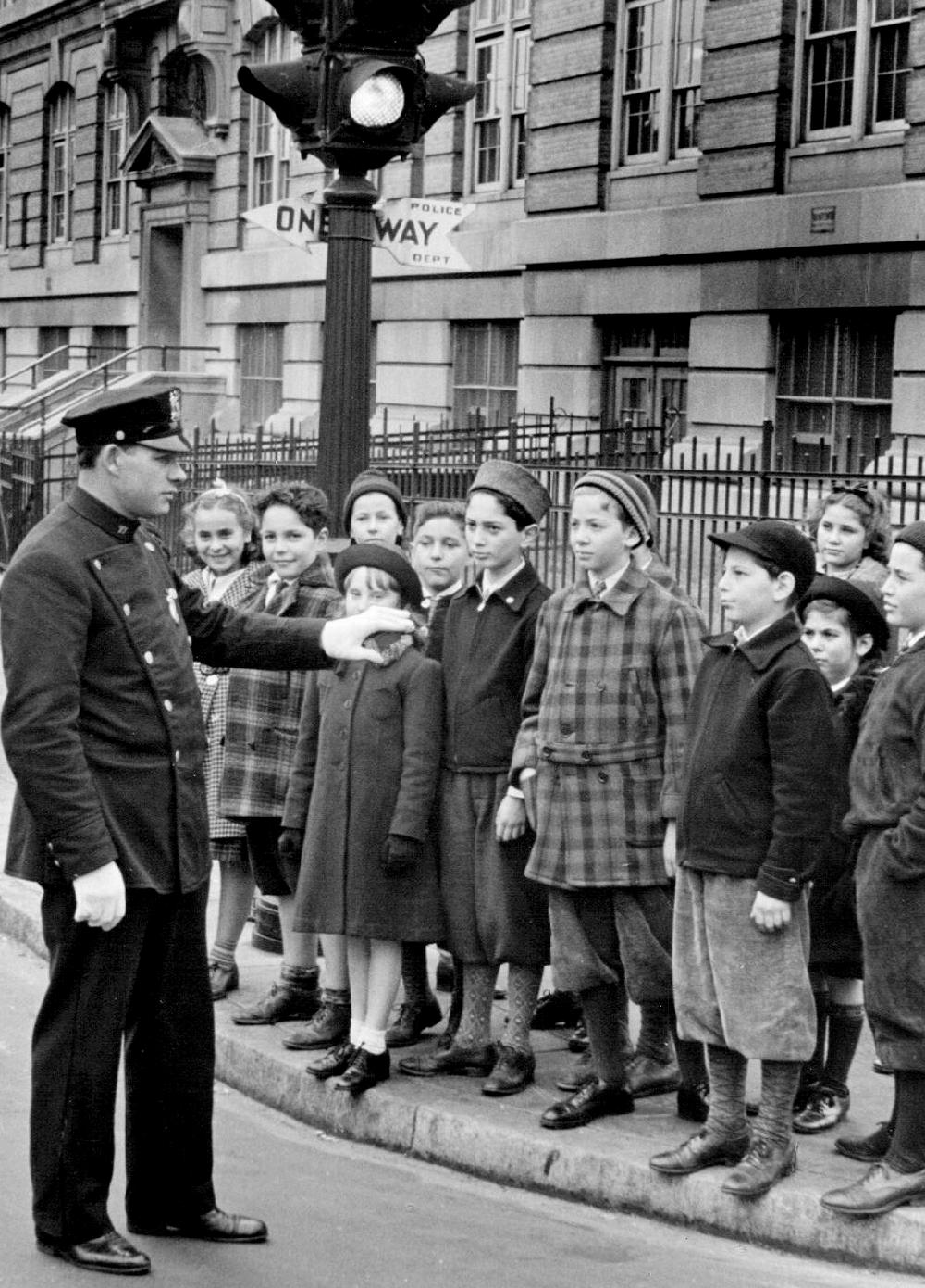
Figure 1.--Here a NewbYork City police crossing guard teaches school children about traffic safety and crossing with the lights. The photograph was not dated, but was the corduroy knickers and knee socks clearly date it to the 1930s. |

|
There are 19th century class portraits at school, but very few images of the children on their way to school. This changes with the development od the simplified, amateur snapshot at the turn-of-the 20th century. Suddenly we have countless photographs of school children. Today we have this image of rural boys dressed in overalls walking to school. In fact, the overalls did not become common in rural schools until about 1910. And soon after the dynamic of walking long distances to school began to change. Henry Ford's assembly-line Model-T soon lead to trucks and World War I greatly expanded the use of trucks. After the War, school busses began to appear in America and were an increasinly important fact (1930s). This enabled the restructuring of rural education. School busses appeared that could inexpensively transport large number of children considerable distances to school. By the 1920s and 30s corduroy knickers were common. Striped "T"-shirts and jeans were very common in elementary schools. This was common school clothes at the times. American children before World War II mosly walked to school. After World War II, most one room schools were closed or in tghe process of bing closed. Fleets of busses brought rural childten to larger consolidated schools in towns. And with the post-War move to he suburbs, by\usses were needed there as well. Many American children still walk to school, especially primary children. This is because primary (elementary schools) are relatively small and located in residential neigborhoods. Most secondary students, however, ride busses because the schools are larger with more expansive catchment areas.
Related Chronolgy Pages in the Boys' Historical Web Site
[Return to the Main Chronology Page]
[The 1900s]
[The 1910s]
[The 1920s]
[The 1930s]
[The 1940s]
[The 1950s]
[The 1960s]
[The 1970s]
[The 1980s]
[The 1990s]
[The 2000s]
Navigate the Relate Boys Historical Clothing Style Pages
[Return to the Main country page]
[Long pants suits]
[Short pants suits]
[Lederhosen]
[Kneesocks]
[Eton suits]
[Jacket and trousers]
[Blazer
[School sandals]
Navigate the Boys' Historical Clothing School Uniform Pages
[Return to the Main American 20th century walking to school page]
[Return to the Main American walking to school page]
[Return to the Main American coming and going to school page]
[Main school dance countries page]
[Main individual 19th century American school page]
[America]
[Australia]
[England]
[France]
[Germany]
[Ireland]
[Italy]
[Japan]
[New Zealand]
[Poland]
[Singapore]
[Scotland]
[Singapore]
[United States]
Navigate the Boys' Historical Clothing Web Page
[Introduction]
[Activities]
[Biographies]
[Chronology]
[Cloth and textiles]
[Clothing styles]
[Countries]
[Topics]
[Bibliographies]
[Contributions]
[FAQs]
[Glossaries]
[Images]
[Links]
[Registration]
[Tools]
[Boys' Clothing Home]
